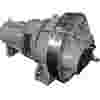Benefits & Payback
Installing an FGRS in an ethylene or more generically in an olefin plant can bring several benefits:
- Reduction of dangerous emissions, noise, light, and odors coming from burning flares
- Recovery of valuable olefins and gasses, which can bring additional cost benefits
- Enhanced sustainability and social commitment towards environment and local communities
Another important consideration is that the investment taken for adding a flare gas recovery unit can be offset by costs reduction over time.




